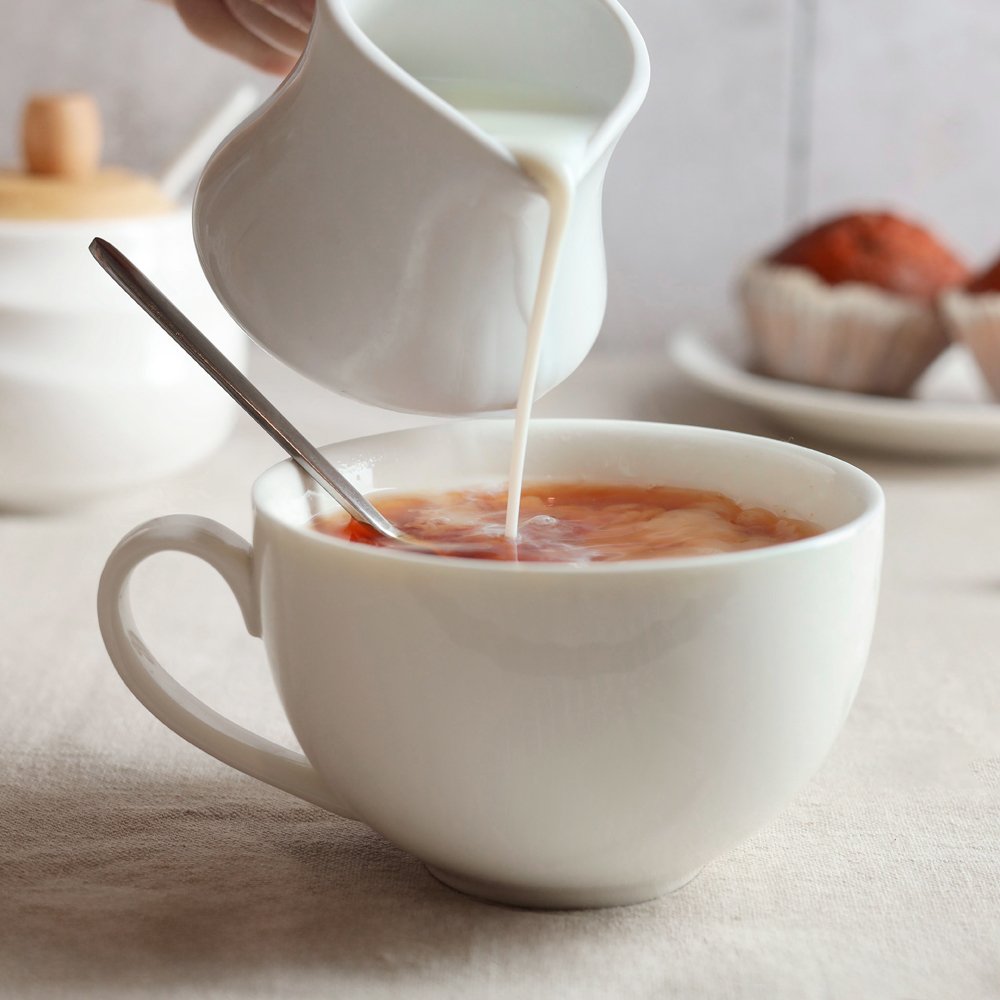The tradition of sipping hot tea has long been a part of many European cultures, particularly in England, Scotland and Ireland. Today, all three of these countries have their own version of the classic “breakfast tea” – but what is the difference between these three similar-sounding varietals?
The general term “breakfast tea” can be used to refer to a type of robust, full-bodied black tea intended to be served with a traditional hearty breakfast. While British, Scottish, and Irish breakfast teas all have similar origins and are made from similar tea blends, there are a few important distinctions for tea drinkers to be aware of.
English Breakfast Tea
English breakfast tea is a rich, bold, full-bodied black tea. While the exact origins of the English breakfast tea tradition are up for debate among historians, the most prominent theory begins with Queen Anne in the early 1700s.
Throughout the 17th and early 18th centuries, the typical English breakfast was a hearty, filling meal consisting of plenty of meat, beans, eggs, bread, and ale. The story goes that Queen Anne was the first to request hot tea as a lighter alternative to ale during her breakfast meal, and her subjects followed suit. It was not long before tea had become a staple on every breakfast table across England.
English breakfast teas are typically blended with milk and sugar to create a comforting and warming cup. While the original tea leaf used to prepare British breakfast tea was likely a China black tea, most of today’s varieties are made from Ceylon, Indian, or African tea leaves.
Our British Breakfast Black Tea — available as full leaf loose tea or in tea bags — is made from a robust, superior blend of high quality Indian, Ceylon and Kenyan tea leaves. We recommend serving it with a splash of milk for an authentic British cuppa!
Scottish Breakfast Tea
Although British breakfast tea is the most well-known of the bunch, the first ever true breakfast tea is thought to have originated in Scotland in 1892, thanks to a Scottish tea master named Drysdale. Legend has it that Drysdale saw a need for an even stronger version of the existing breakfast tea that Queen Anne had popularized in England during the 1700s. As a result, he set out to create a brand new blend that would cut through heavy breakfast foods and provide a burst of lasting energy.
Queen Victoria of England is said to have become enamored with this new tea blend, and it was not long before it was being marketed and sold as “British breakfast tea” throughout England. This tea blend remains the popular choice for English breakfast teas today, but what about in Scotland?
True to their form, modern Scottish tea makers have worked to create an even stronger blend of breakfast tea, to combat the country’s soft water. Today, Scottish breakfast tea is considered to be the boldest and most strongly flavored tea of the three varieties.
It usually has a woody and even smoky flavor, which can be attributed to the strong Assam tea component. Like most English breakfast teas, Scottish breakfast teas are usually made from leaves originating in modern-day Sri Lanka, India, and Africa.
Irish Breakfast Tea
Irish breakfast tea also has a strong Assam component, giving it a robust, malty flavor and reddish color. It is stronger than English breakfast tea, but not quite as strong as the Scottish variety. Because of the important role of the dairy industry in Ireland, it is usually served with milk. However, some Irish tea drinkers choose to take their breakfast tea plain, or with sugar only.
Interestingly, in Ireland the term “breakfast tea” is often considered a misnomer. That’s because Irish breakfast tea is actually consumed throughout the day, with many Irish tea drinkers consuming between four and six cups per day!
Our Lucky Irish Breakfast tea is available in both tea bags and as full leaf loose tea, and has a deep, dark flavor that promotes wakefulness and energy. This hearty Assam and Ceylon tea blend has a malty character, brisk finish and a rich color. Serve with a splash of warm milk and enjoy Sip by Sip!
Which of these flavorful, full-bodied breakfast teas would you most like to add to your morning routine?






